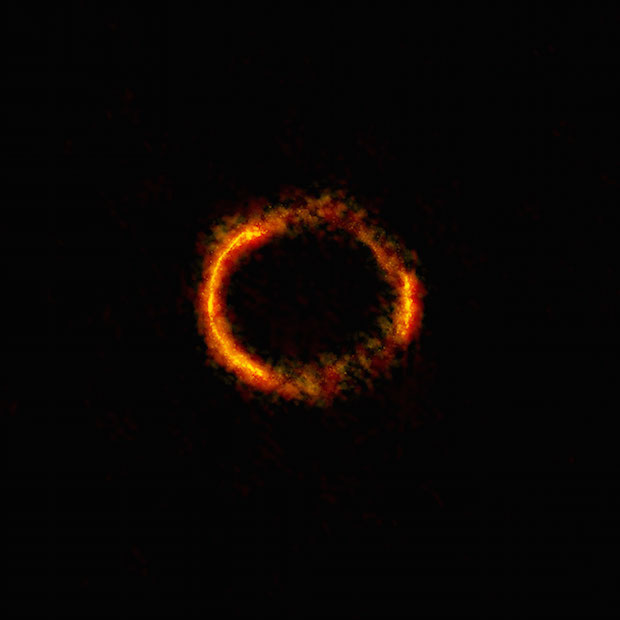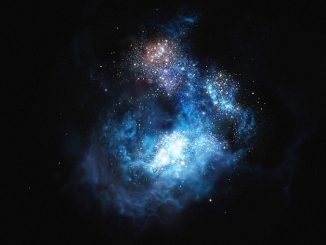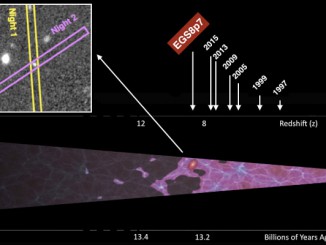
This incredible halo-shaped object is an Einstein Ring, which is an extreme manifestation of Albert Einstein’s General Relativity in action.
Seen by the Atacama Large Millimetre/sub-millimetre Array (ALMA), the Einstein Ring shows the smeared light of a distant star-forming galaxy that existed at a time when the Universe was just two billion years old. Its light is being magnified and bent into a ring by a huge foreground galaxy four billion light years away from us, whose mass is bending space and hence the path that the light of the lensed star-forming galaxy is taking to reach us.
The light in this image is not presented at visible wavelengths, but at sub-millimetre radio wavelengths. ALMA is a huge radio observatory on the Chajnantor plateau in Chile’s Atacama Desert. Sixty-six radio dishes link together to create one huge telescope, in a technique known as interferometry. The maximum distance between the telescopes is 15 kilometres, in essence creating a 15-kilometre-wide radio telescope capable of resolving details far beyond the limits of what the Hubble Space Telescope can see in visible light.
The light at these wavelengths is emitted from molecules found within the star-forming galaxy. ALMA tracked emissions from carbon monoxide and water molecules. The aim will be to use ALMA to further study the gases within star-forming clouds in distant galaxies such as this one, to learn how star formation took place during the earliest times in the Universe.



